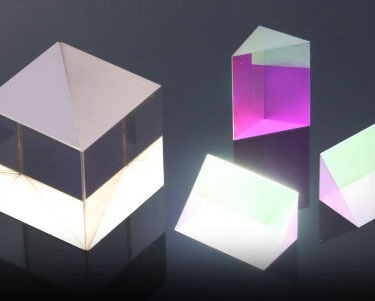Beamsplitters are key instruments deployed across various fields, such as interferometry and optics. They are found in different configurations and can be used in multiple applications. However, how they work exactly often remains overlooked. This article covers all you need to know about beamsplitters, their types, and their applications.
What is a Beamsplitter?
A beamsplitter is an optical device capable of splitting an incident light beam into two. These tools can split both laser and regular light. A beamsplitter can also combine two incoming beams from different angles into a single output.

Image Credit: Shanghai Optics
Types of Beamsplitters
Plate Beamsplitters
Most plate beamsplitters are fabricated using dielectric materials and are typically employed at 45 degrees of incidence. Like cube beamsplitters, they may be configured to accommodate a diverse range of incidence ratios. However, these devices are superior in some areas due to their lower chromatic aberration output.
Plate beamsplitters are more cost-effective than cubes, making them popular among budding optical engineers. Moreover, since their construction is relatively straightforward, they weigh less and can be assembled in bigger proportions than cube beamsplitters.
Another advantage is that optical cement is not required to hold the two halves of the prism together. This is a benefit because lasers can lead to the deterioration of the cement, which also breaks down when exposed to UV light constantly. Lastly, plate beamsplitters are more compact than cubes and need less material for light to pass through.
Cube Beamsplitters
These beamsplitters are made by coating the hypotenuse of dual prisms with a partially reflecting material and joining them together using optical or epoxy cement. They eradicate the ghosting phenomenon because the transmitted beam is consistent with the incident light beam.
A cube beam splitter has a considerable advantage over a plate beam splitter because the former does not generate ghost images. Furthermore, users of cubes can employ a shorter optical path length than plates, preserve equal path lengths, and easily incorporate them into an optical system by maintaining a 0-degree angle of incidence.
Polka-Dot Beamsplitters
These beamsplitters have a polka-dot-like surface. Half of the beamsplitter’s surface comprises dots, which can reflect materials using photolithography or mechanical masking (with any desired ratio). This offers an almost continuous R/T ratio regardless of the viewing angle.
How Does a Beamsplitter Work?
As mentioned previously, beamsplitters can split incoming light into many streams. The splitting process is contingent on the incoming light’s wavelength, intensity, or polarity, as well as the beamsplitter’s construction and settings.
Beamsplitters can differ in size, shape, and material, but the working principle remains the same: the splitter transmits one part while reflecting the other. To ensure that reflected light is directed in the intended direction rather than back toward the source, the position of the splitter or reflecting surface must be at an appropriate angle to the incident light.
Common Applications of Beamsplitters
Beamsplitters typically separate or combine two sources of light with precise R/T ratios. This makes them ideal for use in various technological contexts, such as semiconductors, sensors, lasers, and cameras. Below is a selection of common beamsplitter applications.
Heads-Up Displays (HUDs)
Beamsplitters are commonly used in head-up displays. Projected onto a surface, these images are translucent. Standard head-up displays use a beamsplitter and projection and lens systems to project an image onto the external body of a moving vehicle using a laser.
Interferometry
One of the leading applications of beamsplitter technology is in interferometry. This arises when a beam is split in half after being reflected from a surface. Then, interference patterns created by the combined beam and reflected light can be used to calculate distance.
Lasers
Beamsplitters are frequently used in lasers to generate various beam paths. The laser beam is split into several segments and recombined to achieve this effect. With this assembly, the direction and intensity of the beam of light may be tweaked with remarkable precision and versatility.
Optical Equipment
Beamsplitters are also found in different types of optical equipment. They allow the beam to be divided into segments that can be diverted individually with other inputs, offering more options for directing and shaping the light beam.
Conclusion
Depending on its intended use or purpose, a beamsplitter is a device that can divide or combine light. The assembly works by splitting the incoming light into one to two beams, one or more of which are transmitted through the optical element and one or more of which are directed at an angle away from the optical element. Ultimately, beamsplitters are critical components used in many devices and applications, including lasers, heads-up displays, and others.

This information has been sourced, reviewed and adapted from materials provided by Shanghai Optics.
For more information on this source, please visit Shanghai Optics.